The ideal option for heating a house is heating convectors
You are viewing the section Convectors, located in the large section Heating.
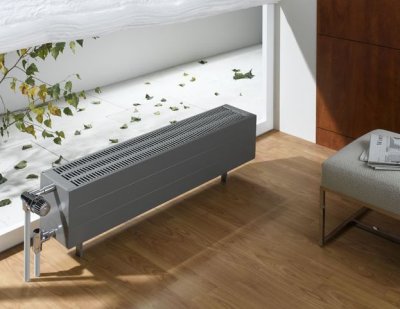
Convectors or heating registers - devices that provide heating of the air in the room. Their operation is based on convection - the movement of air depending on its temperature.
Typically, the device is made of metal and has a rectangular body (except for floor-mounted and baseboard models). The device has a heating element.
Passing through it, the air rises from the bottom up and spreads heat throughout the room. The choice of the device's power depends on the area being heated. This is one of the most common heating devices for household needs. Often, when choosing a heating system, convectors win the competition with boilers and heating radiators.
Content
- Heating convectors: what are they, how do they work and what are their benefits
- How registers work
- Advantages over heating radiators
- Cons
- Comparison with other devices: boilers, batteries
- Types of convectors for home heating
- How to choose a device for home and garden
- Photos of convector devices
- Useful video
- How to properly operate a convector appliance
Heating convectors: what are they, how do they work and what are their benefits
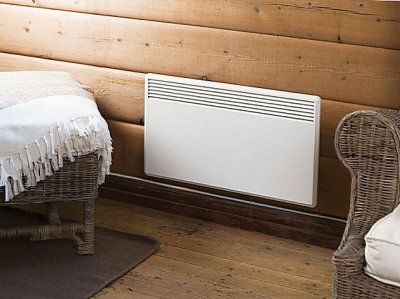
As a rule, the convector body has a rectangular shapeIn this form, the device is found in most premises - especially in modern apartments and cottages, and sometimes in garages.
It can be used for both temporary and permanent heating. Small dimensions allow you to easily move the device from place to place.
But there are also stationary models that are taken into account at the design stage of the building. By installation location:
- floor;
- wall-mounted;
- baseboards;
- underfloor.
The first two types are easy to install and often temporary options (after all, to install a wall-mounted device you only need two screws, brackets and a socket). The second two types are a heating element "recessed" into the baseboard or into the base of the floor, which is covered from above by a screen or grille. Such systems have a more complex design and are used for continuous operation.
How registers work
Warm air rises and cold air falls. Installed near the floor - closer to the cold air currents - the device passes cold air through itself and its temperature rises after contact with the heating element installed inside. The heated air rises and passes through the entire room by natural circulation, providing a comfortable temperature.
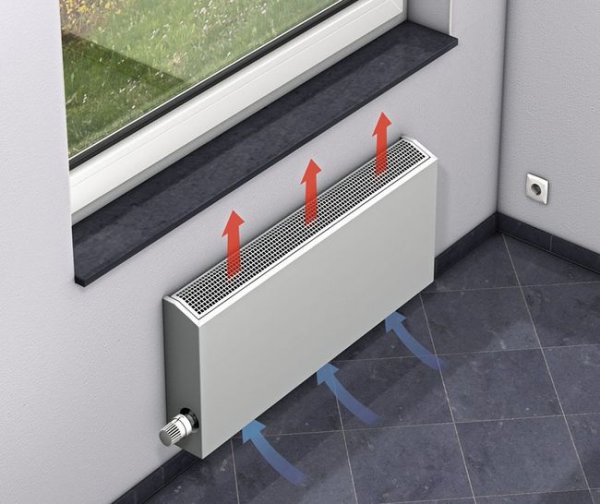
Photo 1. The operating principle of a heating convector: cold air enters the bottom of the device, and warm air exits through the top.
When natural air circulation is not sufficient, forced is used. At the same time, modern systems have a mechanical or electric thermostat integrated, which automatically turns on the heater when it gets cold and turns it off when it gets hot. This saves on operating costs of the device.
It may also contain timer, shutdown system when falling or in contact with clothing, remote control. The functions are switched on and off and controlled by an electronic panel installed on most devices.
Advantages over heating radiators
The advantages of convectors over other heating systems depend on their type. There are:
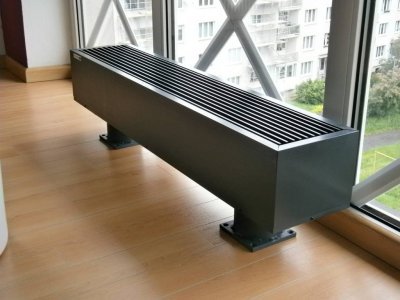
- electrical;
- gas;
- water convectors.
Convection design has advantages over other systems - for example, radiators. It not only radiates heat, but also directs it to the right place with the air flow.
When it comes to batteries connected to a boiler with a water circuit, electric convectors win in terms of mobility: they can be easily moved from place to place. The advantages of convector heaters include:
- Mobility and ease of installation.
- Automatic regulation of energy consumption.
- Fast repair and replacement of spare parts.
In second place — gas convectors. Their main advantage is the ability to use such cheap fuel as gas for heating. Third place — for water convectors: their advantage is the ability to use a centralized heating system and air movement throughout the room.
Cons
The disadvantages of the devices are also distributed according to type. When it comes to electrical devices, their main disadvantages are:
- High cost of equipment and spare parts.
- High cost of electricity.
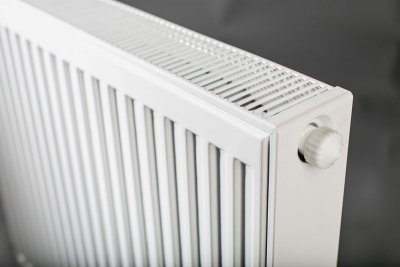
In case of gas options:
- The need for gas pipeline communications.
- The location of the combustion chamber inside the appliance in a living space.
For a water convector — it will be necessary to lay and maintain in working order communications throughout the apartment. And if it is a cottage, then also separately equip a boiler room for heating water.
Comparison with other devices: boilers, batteries
If we compare convectors with other heating systems, we can conclude that When choosing the right option, a lot depends on the type of deviceFor example, an electric convector wins over an electric boiler due to its mobility and functionality.
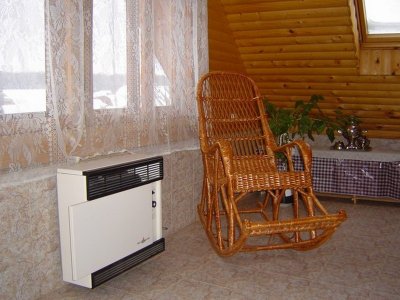
For the boiler It is necessary to build a water circuit, connect a circulation pump, install an expansion tank, shut-off valves, a safety group and other elements.
At the same time, for a house with a large number of rooms, installing a separate device in each of them will become a luxury. Then it is better to install one electric boiler for the whole house and connect radiators to it.
When the area of the building is impressive, radiators will also be more useful than convectors (if they are not water-based). Why install a device in each room and connect it to the power grid if it is much less expensive to heat the water in the boiler room centrally and run it through the water circuit!
It is interesting that although convectors and radiators differ from each other in design, A water convector is very similar to a radiator: Both can be connected to central heating. The only difference is that in the first case, air flow distribution is carried out by vertical plates fixed to pipes with a coolant. In the second case, sections filled with water are used.
Types of convectors for home heating
Heating convectors are divided into electric, gas and water.
Electrical
This type is considered the most common. Wall and floor versions usually have a rectangular body shape. The following are installed inside the electric convector:
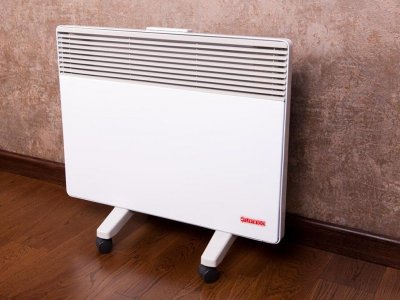
- closed heating element;
- room temperature sensor;
- temperature controller;
- Automatic shutdown module in case of overheating;
- module for switching on and operating modes.
The device is connected to the power grid, measures the temperature in the room, heats the air to a comfortable temperature and turns off until the sensor detects a decrease in temperature.
The body of the device is designed so that air enters from below and exits from above through the guide curtains.
Heating element
Electric convectors use three types of heating elements:
- Tape (needle) The option consists of chrome-nickel loops on a dielectric base that heat up and transfer heat through the body.
Attention! Ribbon element of electric convectors poorly protected from water! It quickly fails due to moisture, so devices with such a heating element are not intended for bathrooms, showers and other rooms.
- Tubular element (TEN) — is a nichrome thread inserted into a quartz tube with steel. The heating element is specially treated to maximize heat transfer. In addition, it is moisture-resistant and can be located, for example, in a bathroom.
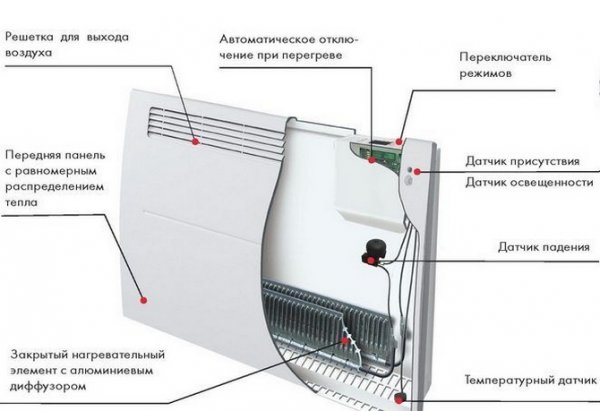
Photo 2. The structure of an electric convector heater with a tubular heating element. The arrows indicate the parts of the device.
- Monolithic option — is a nichrome thread with a dielectric filler, enclosed in an aluminum case. The monolithic element is considered the safest, most reliable and durable. It is suitable for premises of any purpose.
Temperature control
To control the temperature on wall, floor, skirting and floor convectors, use mechanical or electronic thermostat. With its help, the device is set to the required temperature. Each device has a thermostat, which ensures that the device does not overheat. Converters with electronic filling make it easy to program a certain temperature for a certain period of time.
Pros
- Easy to operate. Possibility to connect anywhere there is power supply.
- Floor version can be easily moved from one room to another.
Cons
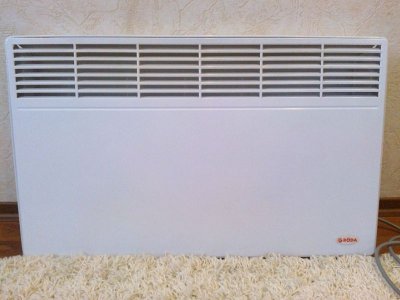
- Electricity Tariffs have resulted in high costs for using the devices.
- Useless in cases where indoors there is no electricity or its consumption is limited.
The price of electric convectors varies depending on their class and country of manufacture.
For example, you can buy a compact Chinese device with low power for 2 thousand rubles. And a device from France, packed with electronics and possessing high power, will cost 13 thousand rubles.
Gas
Gas appliances have a special operating principle.
Operating principle
It consists of supplying gas to the burner, which heats the heat exchanger.. Cold air passes through it from the bottom up, heats up and fills the room. It is better to install a gas-powered device in those houses to which a gas pipeline is connected. The piping around the house itself is done from the outside of the building.
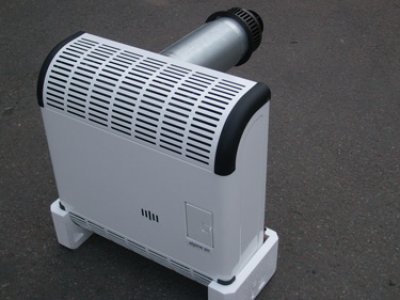
Unlike an electric convector, toxic combustion products are produced in gasThey are removed from the device through a coaxial chimney.
This is a pipe within a pipe, through one of which air is supplied from the street to the device to maintain the combustion process, and through the other the exhaust gas is discharged outside.
A gas convector is usually mounted inside the outer wall of a building., and the gas lines and chimney are brought through the wall from the outside. The device should be located closer to the floor to capture and heat as much cold air as possible. In addition to the burner and chimney, The gas appliance has the same elements as the electric one: thermostat, automation and security system.
The thermostat regulates the flow of gas through a combination valve that allows less fuel when it is warm and more when it is cold. For safety reasons Gas appliances are equipped with two burners: pilot, igniting the gas if the automatic system does not block its supply, and the main one, heating the heat exchanger. In such devices, a fan is also used for accelerated air supply.
Pros
- Savings in fuel consumption. After all, gas - especially from the central gas pipeline - is much cheaper than electricity. Models equipped with electronics allow you to program the unit's operation, reducing, increasing or shutting off the supply at different times of the day.
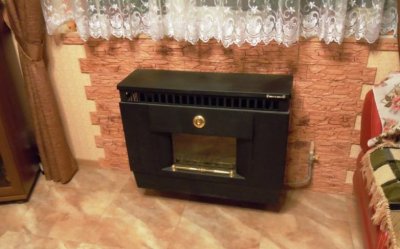
- Reliability and safety of the case: It is made of heat-resistant material, and the protective casing eliminates the risk of burns from touching the structure.
- Heating of area up to 50 sq. m.
Cons
- The need to drill a wall to install a chimney to the street and mandatory connection of gas pipeline communications.
- Restrictions on installation location.
Price of the device: the cheapest option will cost 14 thousand rubles., and the expensive one is in 50 thousand rubles.
Water
A water convector differs from a central heating radiator in that the former heats the air currents passing through it from bottom to top, and the second one simply radiates heat. The design of the water convector is a pipe with vertical metal plates.
Operating principle
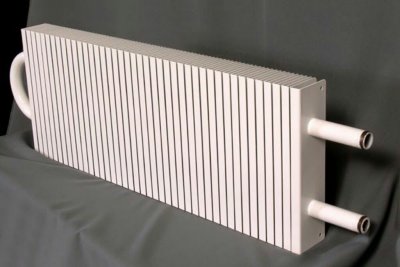
Hot water flows through the pipes, and air currents move through the plates attached to the pipe, heating up and distributing heat throughout the room.
How the device is protected - by a casing or a grille - depends on location: The device can be wall-mounted, floor-mounted or built into the floor.
The device may include thermostat and air bleed valveThe design of the water unit allows for the installation of several heat exchangers, which makes it possible to increase the power of the device and the heating area.
Reference. Water convectors can be operated using central heating system, solid fuel, gas or electric boiler with water circuit.
Pros
- Possibility of central heating of several rooms at once: The required number of devices can be installed throughout the house, which will be supplied with coolant from the boiler room.
- The safety level of water devices is higher than that of others: They cannot catch fire, do not give electric shock and do not emit toxic products.
Cons
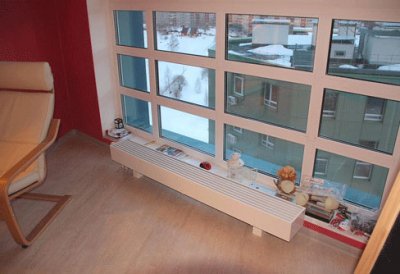
- The devices are connected to the water circuit: they cannot be moved from place to place.
- In winter, water convectors require increased attention: If the heating stops, the water from the system must be drained immediately, as it may freeze and burst the pipes.
Prices for water convectors vary in the range from 3 to 30 thousand rubles. In addition to the manufacturer and the complexity of installation, the price of the device is also affected by its design. For example, a device designed as a bench with a back will cost a lot of money.
How to choose a device for home and garden
There are several factors to consider when choosing the right device.
Premises
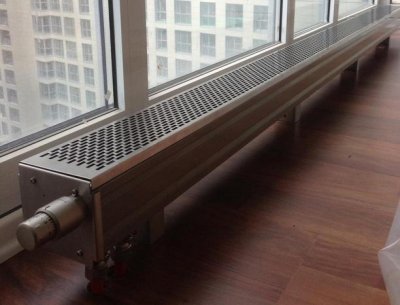
To choose the right convector, you need to determine what type it will be, what power it will have, as well as its installation location and control method.
If the device is installed in a bathroom or kitchen, it must have a moisture protection rating. IP 24. For a living room or bedroom, the option with is suitable IP 21 (protected from water drops) and IP 20 (without moisture protection).
In this case we are talking about electric models, since gas ones are limited in placement, and water ones are not afraid of moisture. Gas units can only be placed on the outer wall of the building and in rooms adjacent to it. But water devices They can be mounted anywhere in the house or cottage, as long as there are water supply lines.
Important! To heat several rooms in the house, use water convectors! With them, energy consumption for heating water is less, and a comfortable temperature in the room is guaranteed.
Ratio of footage to power
The choice of heating device is determined by the area to be heated. The ratio of footage and power is calculated using the formula: 1 kW for every 10 sq. m., if the walls no higher than 2.7 meters. As the height increases for every 10 cm 10% power is added. Other factors also influence the calculation of the device's power: for example, whether the room is a corner room and how large the glazing area of the room is. In these cases, not only the power is important for efficient heating, but also the location of the device.
Where to place
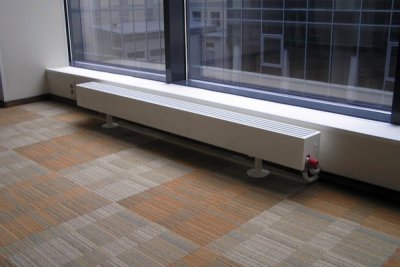
Since its operation is based on the transformation of cold air masses into warm ones, The convector must be located in a place where there is active air movement.
Therefore, the device is placed as close as possible to the floor, where there is a lot of cold air, around the perimeter of the room and in the window area.
Gas and water options require communications for fuel and heat carrier supply in such places. Electric convectors can be installed almost anywhere where there is a power source.
View
The choice of the type of convector is often influenced by the location of the building and its nature: all-season house or summer cottage. In the first case, the heating system must be capital. If the house has gas pipeline communications, it is advantageous to install gas appliances in it, since the price of gas is relatively low.
If the house is multi-storey, then thanks to central heating it is easy to install water devices in it. The electric version is ideal for a summer house, where only temporary heat supply is required. Plus, the mobility of portable floor electric convectors allows you to use them when necessary almost anywhere.
Choosing a thermostat
An important characteristic of the operation of heating devices is their efficiency and ability to respond to changes in room temperature. Thermostats help solve this problem: mechanical or electrical.
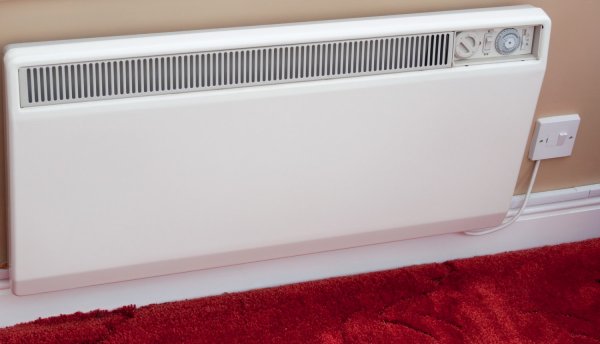
Photo 3. Electric heating convector with a built-in mechanical thermostat, allowing you to set the desired temperature.
Which one to choose depends on the buyer's preferences. Electric ones - work silently, have accuracy ± 0.1°С and promotes rapid heating of the air.
The mechanical version can produce barely audible sounds and is accurate. ± 0.1 - 0.3 °С and has a slower effect on increasing the room temperature. But it is not subject to voltage fluctuations and does not require power supply. From this point of view, a mechanical thermostat is better than an electric one. But if we are talking about a device in a bedroom where noise is not needed, or precise temperature control is required, an electric version is used.
Safety
The water convector is considered the safest. It will never shock you or allow a gas leak. At the same time, the electric and gas versions are equipped with automatic systems that instantly block the supply of electricity or gas in case of danger. For example, some electric convectors have a function of automatic switching off the heater if it is accidentally touched or overturned.
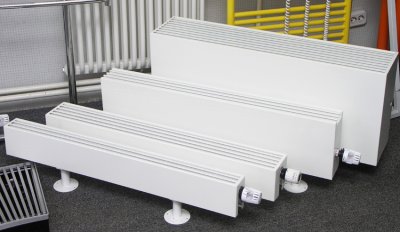 ?
?
Gas appliances have thick heat-resistant bodies and two burners, one of which will not turn on if the gas supply is blocked automatically for some reason.
Finally, all convectors are made in such a way that their casings do not allow heating above the range 45—60 °Cto avoid burns when in contact with the human body.
Additional functions
Depending on the model of the device, it may have both basic and additional functions. For example, expensive versions include programming the device. This allows the device to be integrated into a smart home system. If there are several heating devices in the house, they can be connected to a single control panel that centrally sets its own temperature for each room where the device is located.
There is also access to control via the Internet. This enables remote control of the heating system. Then, for example, in winter, when there are no people in the premises, the program can set a minimum heating level and optimize energy or fuel consumption.
Appearance
In addition to additional practical functions, the manufacturer often pays attention to the aesthetic appearance of the devices. Thanks to this Most convectors not only do not spoil the interior, but even diversify it, as in the case of the water version in the form of a bench.
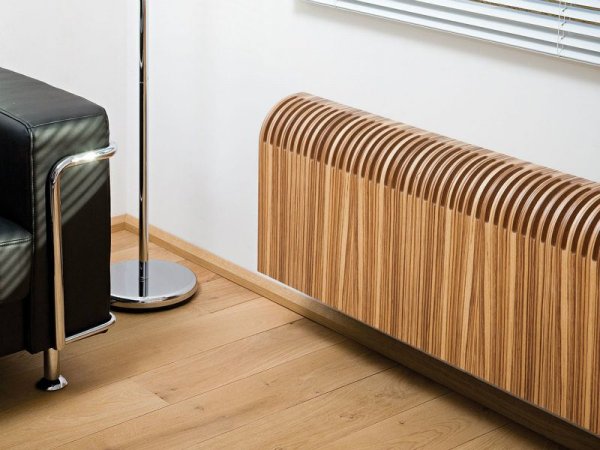
Photo 4. Heating convector with designer decoration. The device is covered with a wooden screen on top.
In most cases, if the device is not built-in, it looks like a streamlined rectangle of white, black or gray. However, there are also Premium samples with interior finishing.
Economy
Although devices with additional functions are more expensive, the costs for them are often recouped through energy savings. The most difficult time to make a water convector work economically is in winter. The heat supply to the room cannot be turned off when there is no person in it.
You can reduce your heating costs either due to the thermostat, manually setting the minimum temperature for the time of departure, or using a programmable remote control that sets its own temperature regime for each time period and room. It is not quite usual, but cheap to use a gas unit for heating.
But despite all the opportunities for saving on gas and water devices, for urgent heating of any room an electric convector will be irreplaceableIt is no coincidence that it can be found in stores more often than other systems.
Photos of convector devices
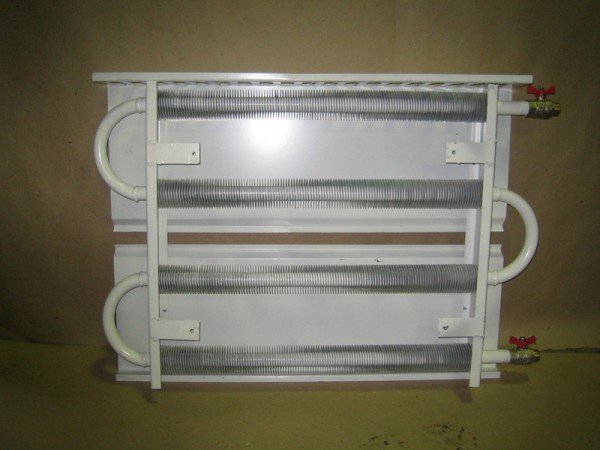
Photo 5. Homemade heating convector. The device is made of metal pipes with many plates on them.
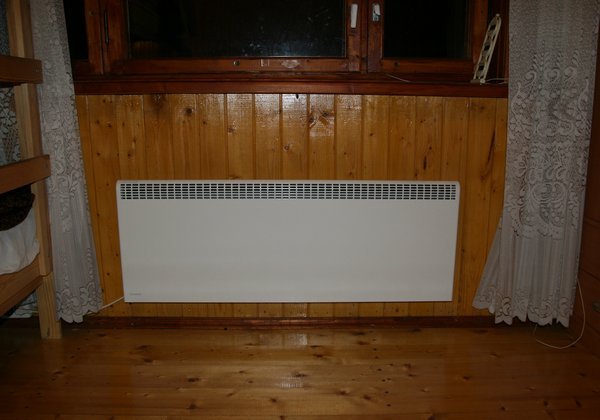
Photo 6. Electric heating convector. Wall-mounted device, installed like a regular radiator.
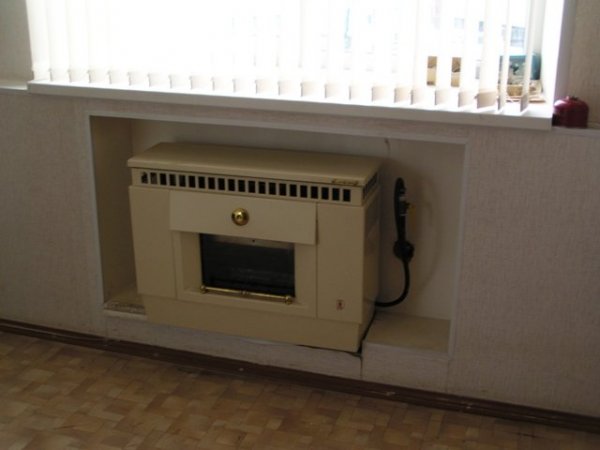
Photo 7. Gas heating convector. The device resembles a small fireplace and is installed on the wall.
Useful video
Watch the video to find out which is better: an electric boiler or a convector.
How to properly operate a convector appliance
The efficiency of the convector directly depends on its proper operation.
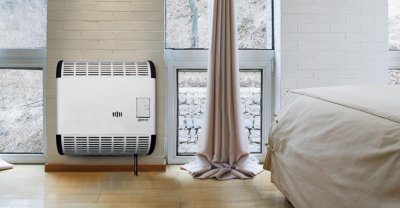
First of all, the device must be positioned correctly to maximally capture the cold air currents that it will heat.
As the heat supply increases or decreases depending on thermostat data, it is necessary to ensure maximum precision of its operation, and, if necessary, use a remote thermostat.
The service life of the device is extended through the thoughtful use of its resources. — for example, if there is no need for high temperature, reduce it to a minimum so that the heating element does not wear out in vain. It is also necessary to regularly conduct a technical inspection of the devices to ensure that all system components are in safe working condition.










